Last week when I was at Ridley Creek State Park I crossed paths with a tree tour led by wildlife biologist Gary Stolz (PA Dept of Conservation and Natural Resources). I promised the group that I’d post photographs of things I’d seen at the park. Here are the highlights:
Long-tailed giant ichneumon wasp
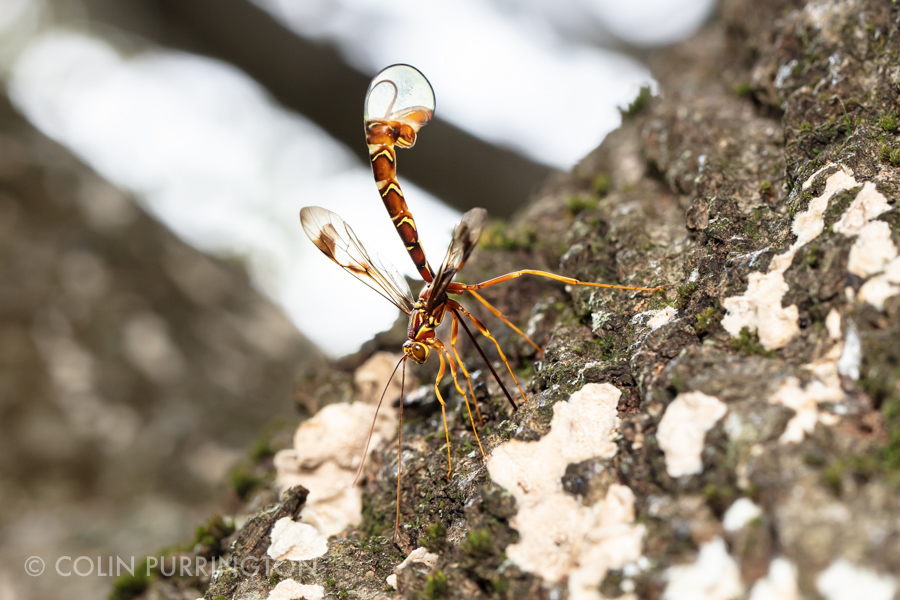
The largest and most colorful was clearly the long-tailed giant ichneumon wasp (Megarhyssa macrurus) that I found ovipositing into a red maple. Actually, there were perhaps a half-dozen of them, all presumably targeting the larvae of Tremex columba (a sawfly) that were busy eating the tree. The presence of the sawflies is given away from probably a mile away (I’m guessing here) due to the odor of the symbiotic fungus they use to help digest the wood. Once on the tree, though, the ichneumon probably locates a larva by sensing the vibrations it makes when chewing. The ovipositor is approximately 2″ long and is tipped with a cutting edge (as you might guess). It also drips out a fluid that helps dissolve the wood. An amazing insect to watch.
Green’s giant ichneumon wasp
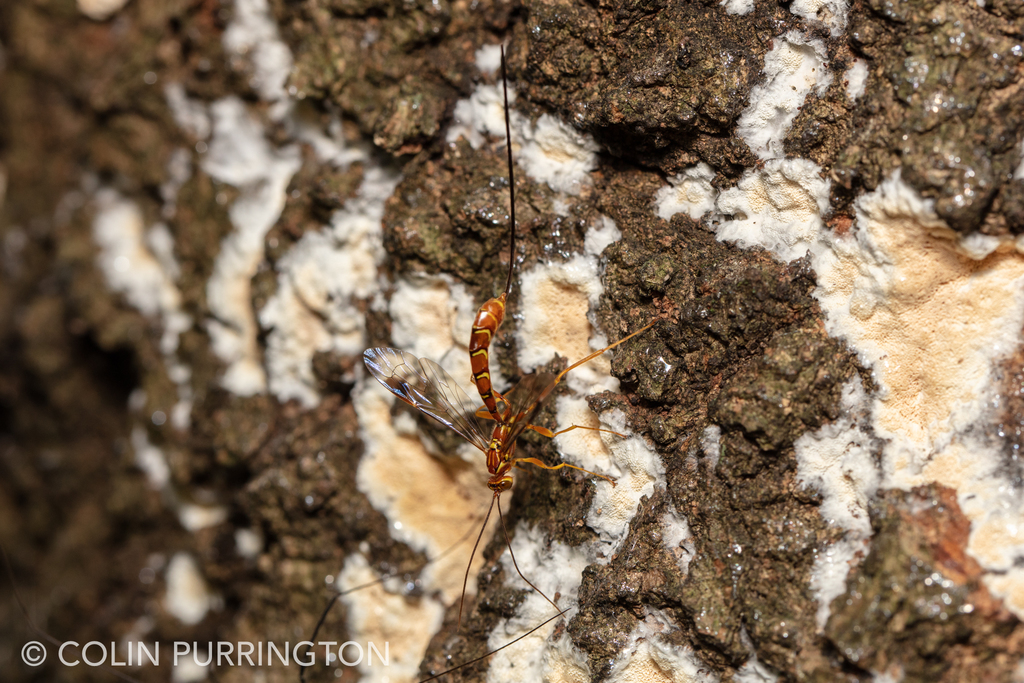
Also on the same tree were several Green’s giant ichneumon wasps (Megarhyssa greenei). This species has a shorter ovipositor (among several other differences) but does pretty much the same thing as the species above.
Unknown wasp in Tribe Ephialtini
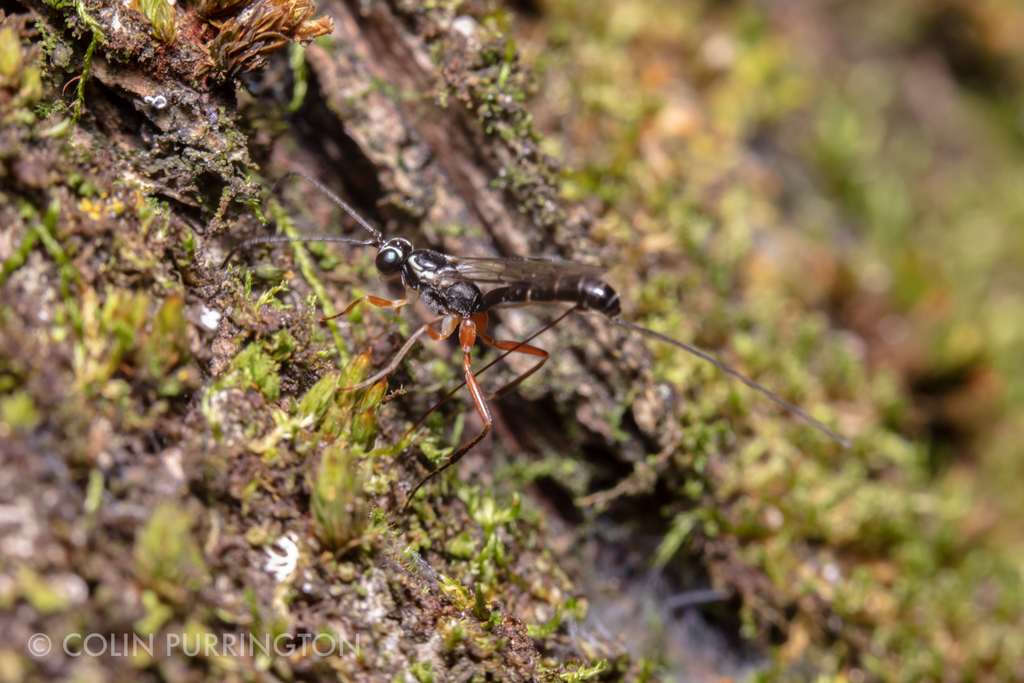
Also beautiful but much smaller (perhaps 12 mm), I found this wasp ovipositing into a nearby tree that was completely dead and covered with moss. I’m still working on an ID (it’s something in the Ephialtini). Which means, like many of the insects I photograph, I’m hoping that an expert will eventually help me identify it. Sometimes that process can years but I’ll update this page if there’s any movement. For those curious, I post photographs to iNaturalist and BugGuide for help. And I often ask my Dad (Foster Forbes Purrington), an entomologist.
Coelichneumon navus
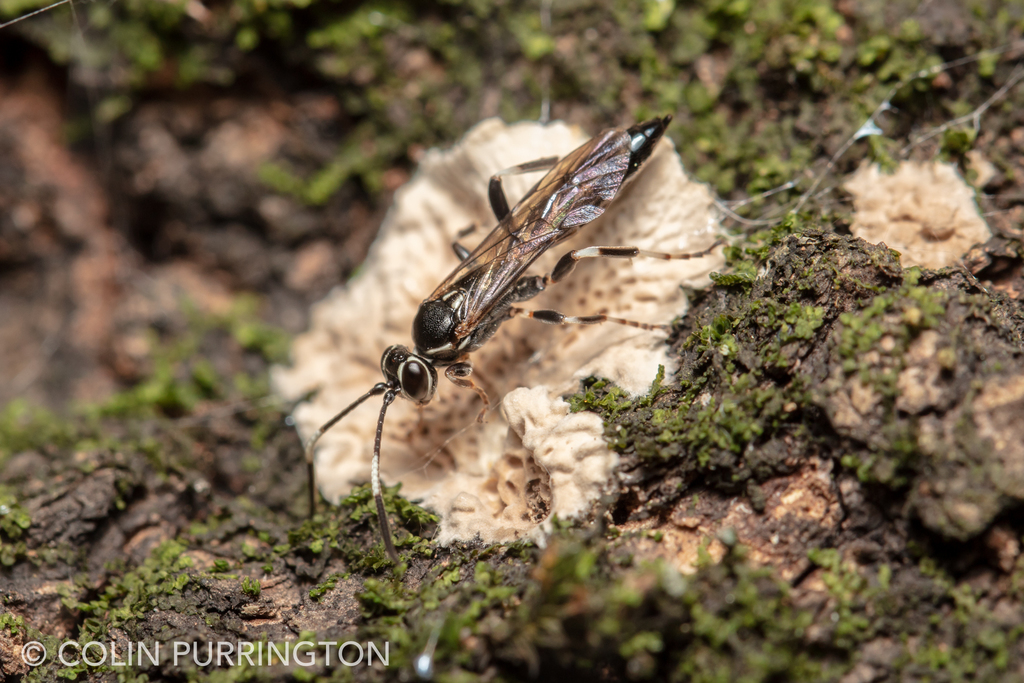
The last wasp of the day is Coelichneumon navus, another ichneumonid but with a concealed ovipositor. This species has been known to parasitize fall webworm (Hyphantria cunea) and cypress looper moth (Iridopsis pergracilis), but like many of the 100,000 or so members of the family Ichneumonidae not much is known about its natural history. I found two caterpillars on this tree but haven’t yet ID’d them.
Gnophomyia tristissima
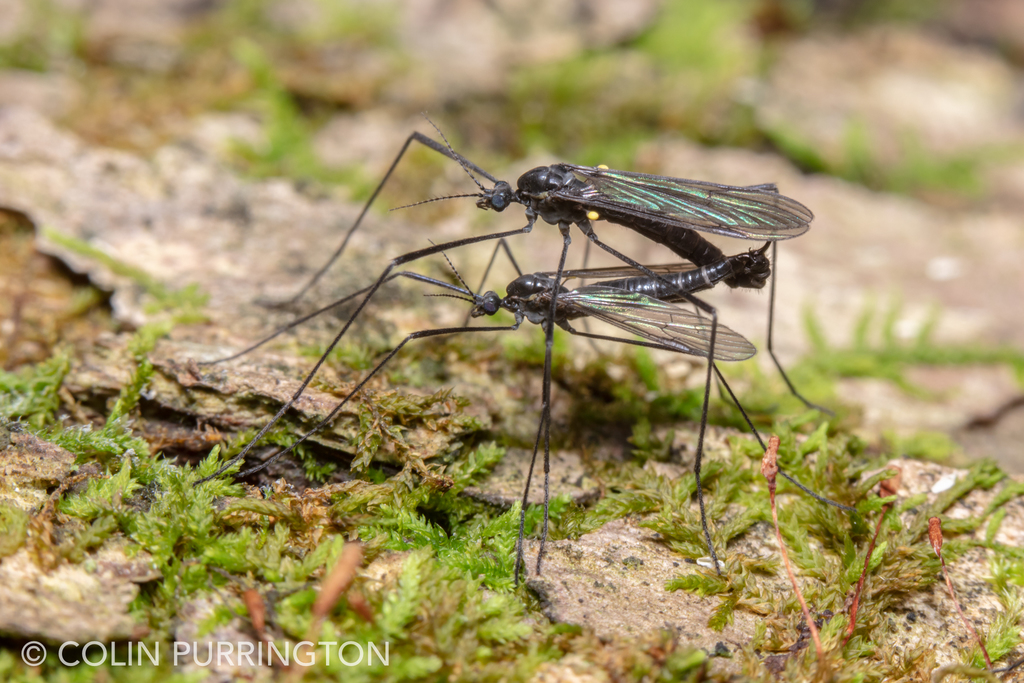
Another insect with no common name, Gnophomyia tristissima live, love, and die around rotting hardwood logs. These are crane flies and can be identified by their bright yellow halteres (remnants of their second pair of wings) and black bodies. This photograph shows mating but afterwards the male seems to guard the female while she oviposits (if you want to see that, click on image to be taken to a site that has additional photographs). I spent about 30 minutes watching and photographing them and could have stayed longer. But the mosquitoes were exsanguinating me.
American nursery web spider
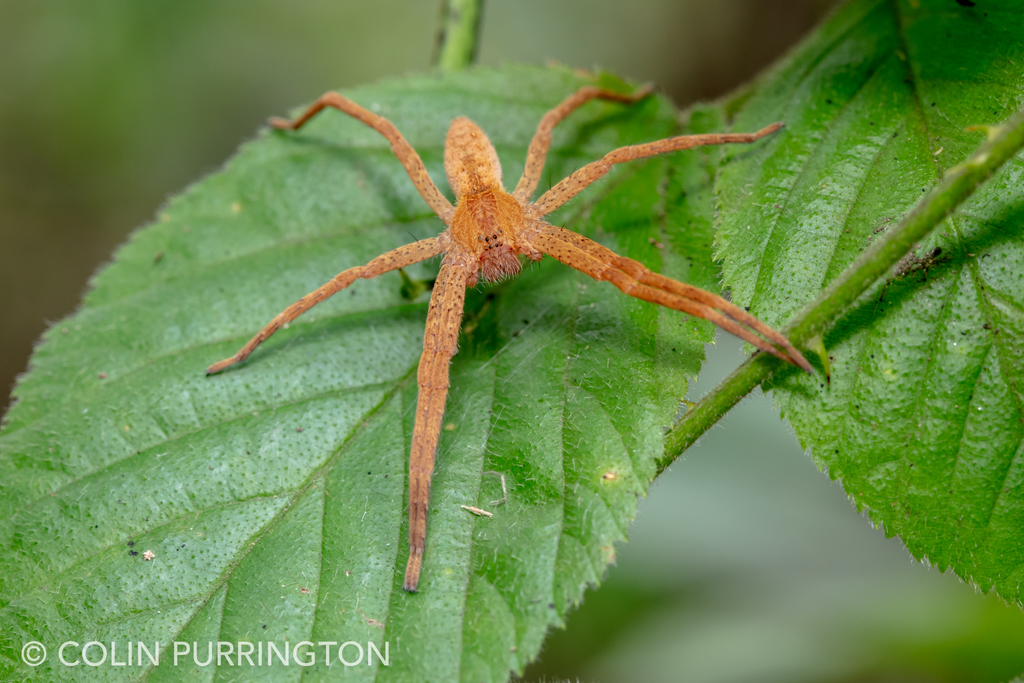
Earlier on my walk I found a rather orange American nursery web spider (Pisaurina mira). It was also rather large.
Banded fishing spider?

I can usually narrow down spiders given their eye arrangement and details of web (or lack thereof), but this is stumping me. My tentative guess is that it’s a freshly-molted (teneral), juvenile banded fishing spider (Dolomedes vittatus). I’m trying to get this confirmed so check back if you’re curious. Astute readers will notice that it’s on a tree, not near water, but apparently there are few members of Dolomedes that can live away from water just fine. This is one of those species.
Northern water snake
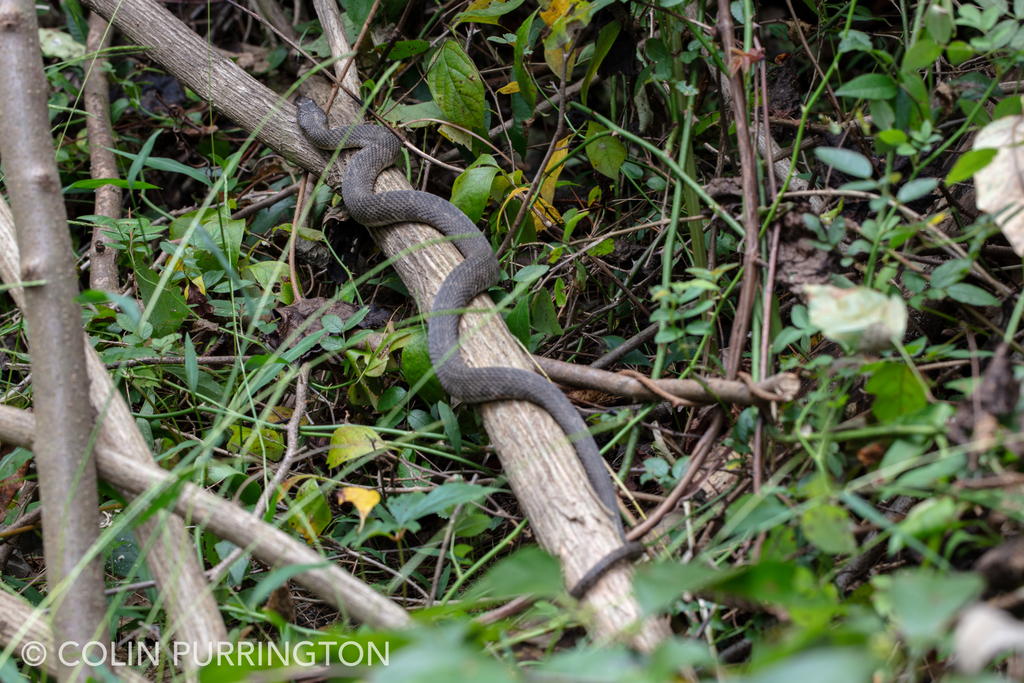
This was the first time I’ve seen a northern water snake (Nerodia sipedon) but apparently they are super common. This one was perhaps 2 feet long but they get as big as 4 1/2 feet. Non-venomous, though, in case you were wondering.
Sulphur tufts?
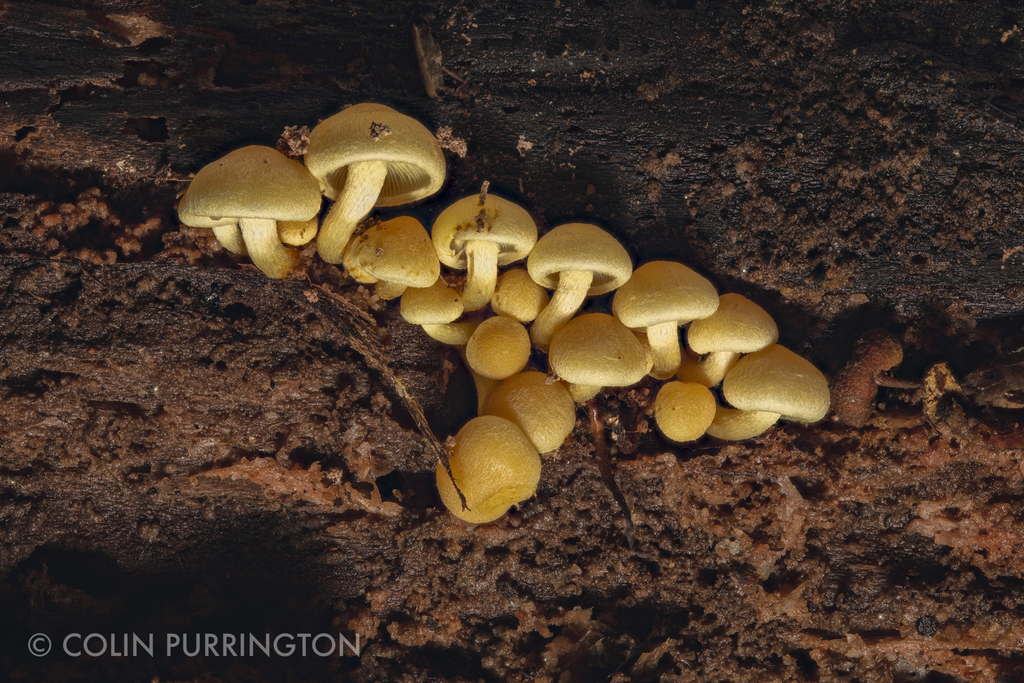
I’m still working on an identification but my current guess is sulphur tufts (Hypholoma fasciculare). Or, if you prefer, sulfur tufts. I really enjoy photographing young mushrooms but the consequence is that they are harder to identify.
That’s it! If you have any questions, send me a note or leave a comment.

Apparently northern water snakes have an anticoagulant from their bite–I assume that’s just a component of their saliva rather than a venom injection? I haven’t been bitten by one but I can say that they will at times show some pretty unusual aggression when you compare them with garters and their close relatives. I haven’t seen one at Ridley Creek but there’s a spot in the Brandywine where I ran into one pretty much straight for 3-4 years.
That’s really cool about the anticoagulant. Biggest snake I’ve ever seen in PA and sure gave me a scare. I really don’t know my snakes. All I know is that there are some venomous ones in PA, and this one was large. Where does one hike in Brandywine?
Nice–I’d totally forgotten about Ridley; lived in Philadelphia back in the early ’90s and used to love that place. There were some great beech groves down by the creek.